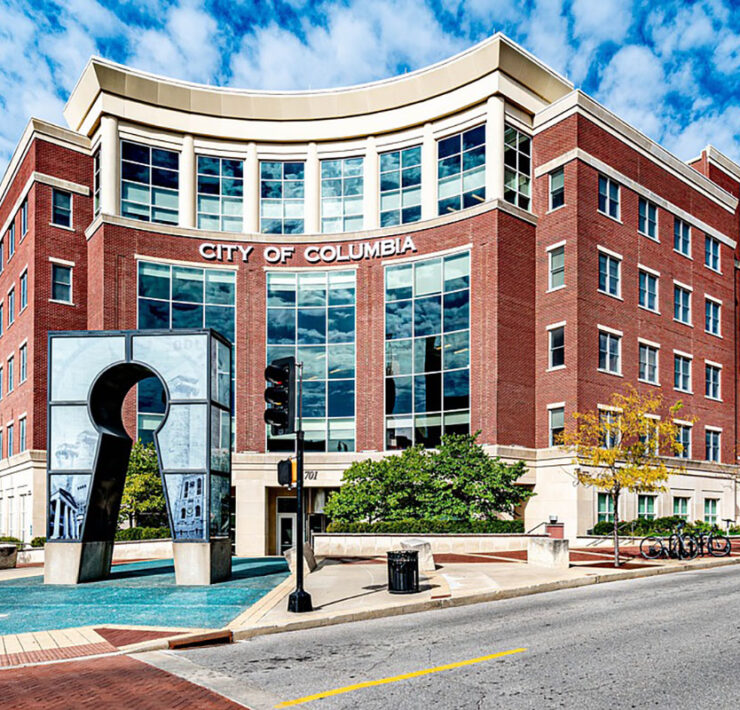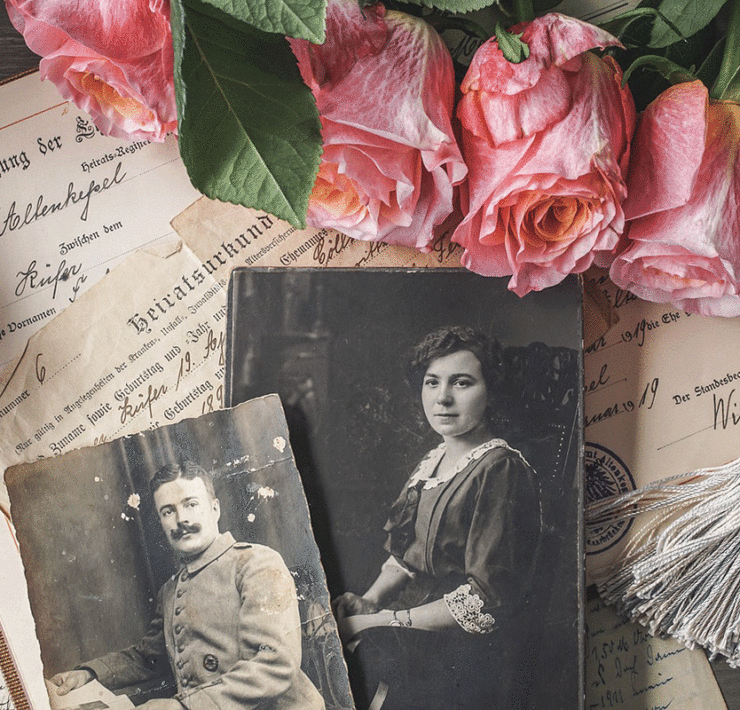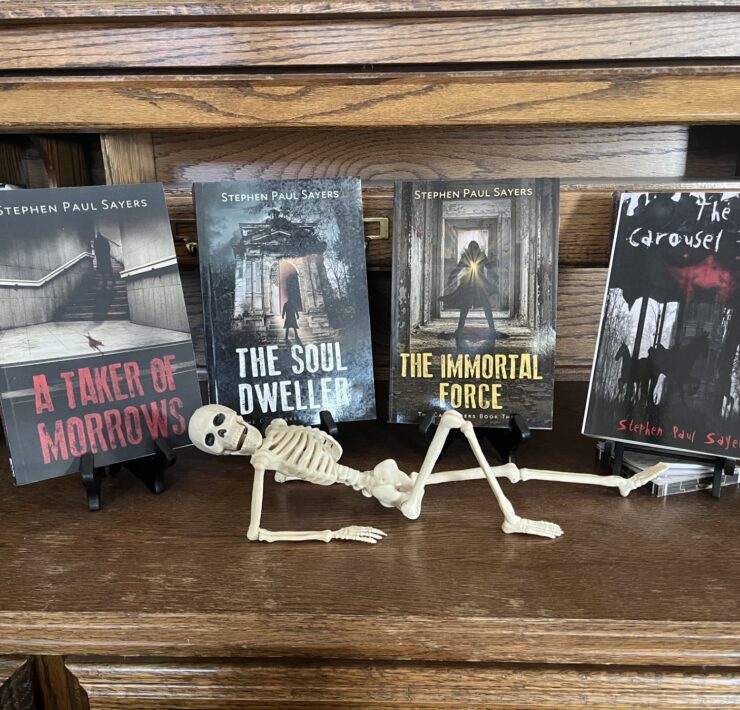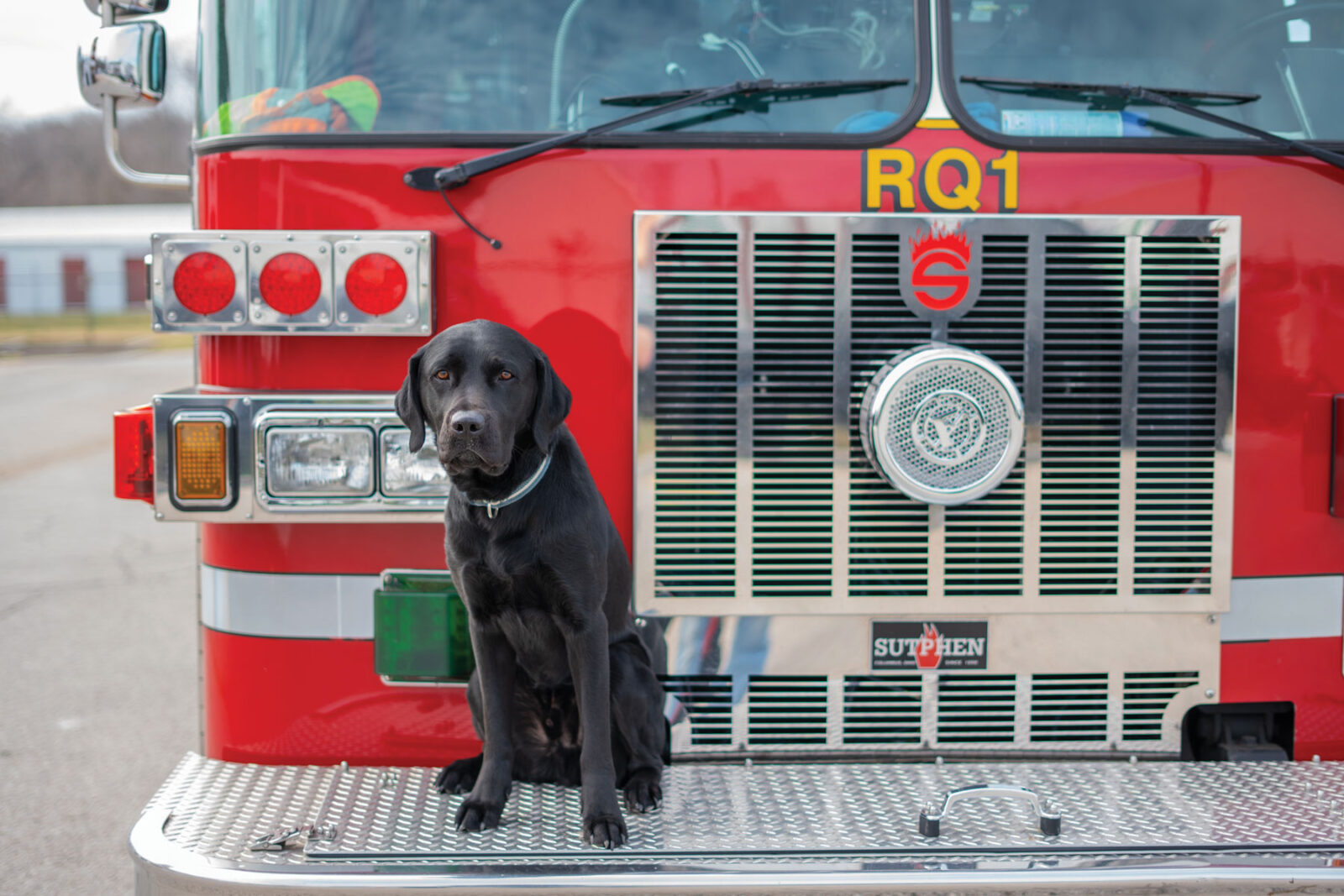
From guide dog wannabe to fire department K-9.
Thanks to his exceptional olfactory capabilities, a very good boy is getting a second chance at public service. Tony, a four-and-a-half-year-old black Lab deemed to be too “high energy” to be a guide dog, has settled in as the Columbia Fire Department’s K-9. His job: sniffing out accelerants.
Jim Pasley, battalion chief training officer, and K-9 handler for the CFD brought the K-9 accelerant detection program to the state and he’s been the local fire department’s K-9 handler for six years. Tony has been active with the CFD since September 2022.
When Jim applied to get Tony through the State Farm Arson Dog Program, Missouri did not have an accelerant detection canine team in the state.
“State Farm bases their approvals off a need and area, so I saw the need in our state, applied and was approved,” he says. Currently, Jim and Tony are the only active accelerant detection K-9 team in the state.
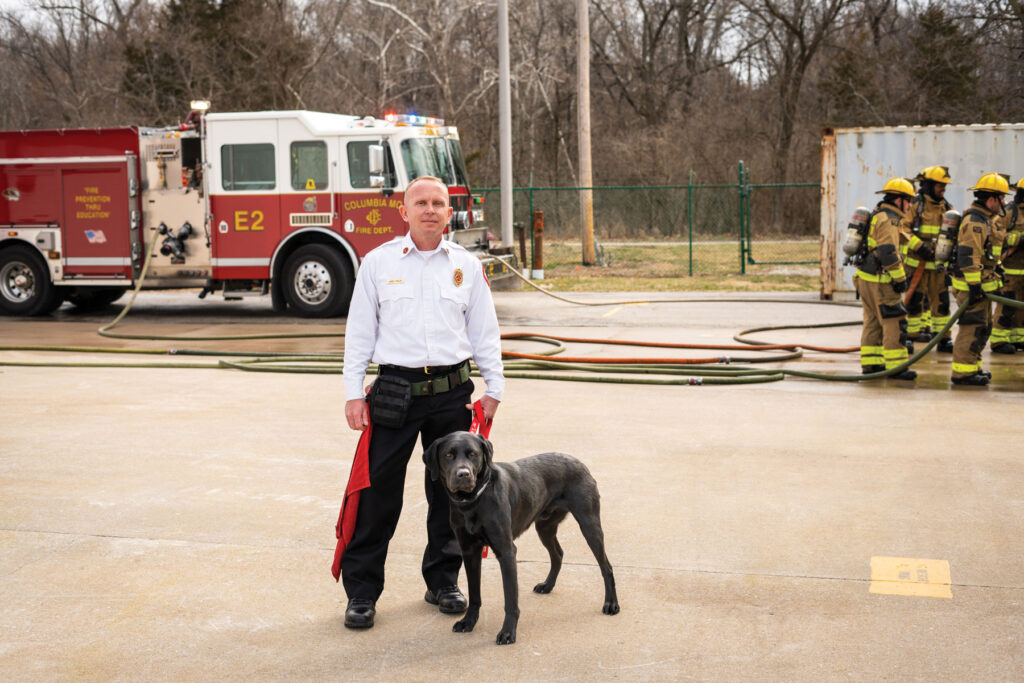
OLD DOGS, NEW TRICKS
Tony was training as a guide dog prior to becoming an accelerant detection canine through the State Farm Arson Dog Program. The program sources its canines from animal shelters, rescue organizations, or certified companion programs that raised the dogs to offer disability assistance but didn’t complete training due to high energy levels. The State Farm website boasts that the program offers dogs a second chance to serve by becoming accelerant detection canines.
Established in 1993 under the guidelines of the Maine Criminal Justice Academy, State Farm, along with Maine State Police, started the program with the intentions to “match and train handlers with accelerant detection canines to counter arson fraud, raise awareness, and help reduce future occurrences.” So far, the program has established more than 425 dogs and handlers in 46 states and Canada.
Once acquired by the State Farm training program, canines go through a thorough three-month, 200-hour training course with the handler before being certified to become an official accelerant detection canine. Training takes place in Maine and is provided by Maine Specialty Dogs.
Each accelerant-detecting canine, on average, costs $25,000 to acquire and train. The expense is fully covered through State Farm’s Arson Dog Program.
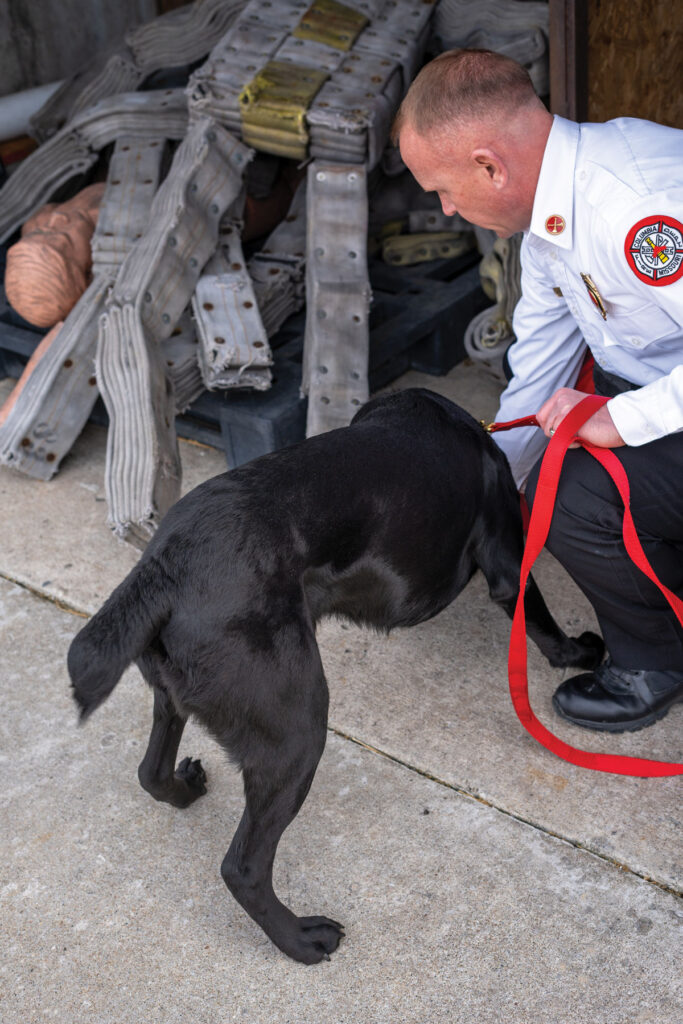
PRACTICE MAKES PERFECT
Jim says Labrador retrievers are uniquely qualified for the role. Not only do they carry an unparalleled gift to distinguish accelerants at a fire scene, their friendly disposition and personality, combined with their joy for working, make them the perfect candidate for the position — and Tony is no exception.
If practice makes perfect, Tony should be as close to perfection as they come. He starts every day with “the basics” as handler Jim calls it.
“It’s just a can with 50 percent gasoline in it; his job is to sit, no matter where I move that can to,” Jim explains. “If he smells it, and he sits, we feed him a treat right over that can. It instills that positive food reward with the job well done.”
If he doesn’t have a fire call, Tony will spend most of his day training or doing community outreach or demonstrations throughout the state.
On slower call days, Jim uses their time to do more intense training at the dedicated canine training area in Columbia. Jim says that training is similar to their morning basics training, but a bit more in-depth.
“We make that training more realistic to an actual fire scene. We burn paper, wood, plastic, and carpet in multiple cans. One small drop of gasoline will be added to one of the cans,” he says. “Now the dog has multiple cans with burnt debris. It’s Tony’s job to decide which one has the accelerant in it.”
How is that possible? A canine’s unmatched olfactory capability — its keen sense of smell — makes all the difference. Dogs have up to 300 million smell receptors in their noses, while humans only have about six million, meaning a dog could potentially detect a drop of an alternative liquid mixed in a million gallons of water.
A DAY IN THE LIFE
Tony’s unmatched olfactory capabilities make him an invaluable tool to the CFD. His main function is to assist the primary investigators at suspicious fire scenes in getting samples that will have a higher probability of testing positive for accelerants.
“We’ll go through a scene and we’re just watching for his clue, for Tony’s sign that he smells something,” Jim adds. “We aren’t telling him where to look. We’re just giving him the chance to smell the scene and tell us where to look.”
Samples will be collected throughout the house and when Tony signals an accelerant is detected, those samples will be presented again. If he chooses the same sample, it will be sent to a lab for processing to determine if there is a presence of accelerants. Tony can also be used to find accelerants near or around a fire scene. If a large crowd is gathered at a fire scene, Jim can use Tony to comb through the crowds to see if he detects an individual with an accelerant on their clothing or skin, which can lead to that person being questioned. Tony can sniff large outside areas and exteriors of structures to see if accelerants have been stored nearby or lead investigators to vehicles that might have accelerants transferred into them by a person or clothing.
WORK HARD, PLAY HARD
Apart from training and investigating fire scenes, Tony often participates in community outreach and demonstrations throughout Missouri. Jim has taken CFD’s canine to daycare demonstrations, community 5k runs, and pet-friendly events. They also take part in a Mizzou elective course that highlights the dogs working to serve, protect, and assist emergency services workers and individuals with disabilities.
Tony lives with the Pasley family in his own designated space when he is off duty. On a typical night or day off, Tony gets to be, well, just a dog — playing with the Pasley’s other dogs, spending time outside, and having a chance “to be more relaxed,” Jim says. “But he still trains every day — two, three, sometimes four times a day. Really, when he isn’t at the station, he’s like any other fireman here, just waiting on a call.”
THE GOLDEN YEARS
Most accelerant detection canines start in the training program around 18 months of age so they are over 2 years old before they complete the Arson Dog Program.
“We have an agreement with State Farm that we will work them for a minimum of five years,” Jim says. “So, depending on the age of the dog when they come into the program will determine how long they work. Typically, seven, eight years.”
At the end of the five-year agreement, the fire department will have the option to continue working with the dog to the age of 10.
“They will be retired at age 10 no matter what because our intent is for these dogs to have a good life,” he adds. “We don’t want them worked to an unfortunate point in their lives. We want them to have the best life possible.”
Once Tony’s commitments to the CFD have been fulfilled, he will spend his golden years growing old with the Pasley family.
“I made sure that clause was added to the agreement, that he would get to retire with me. This dog literally eats out of my hand; there’s such a bond there,” Jim says. “Everywhere I go, he goes. He’ll stay with me forever.”



